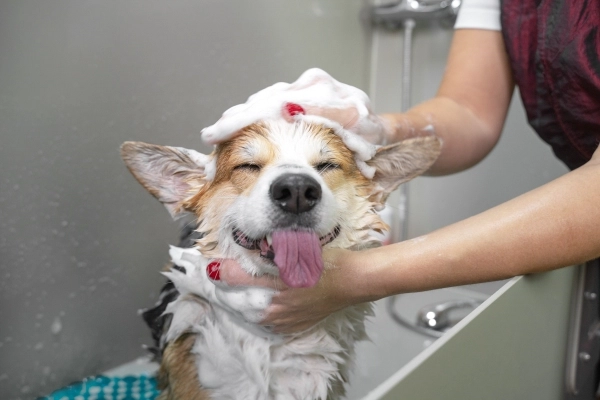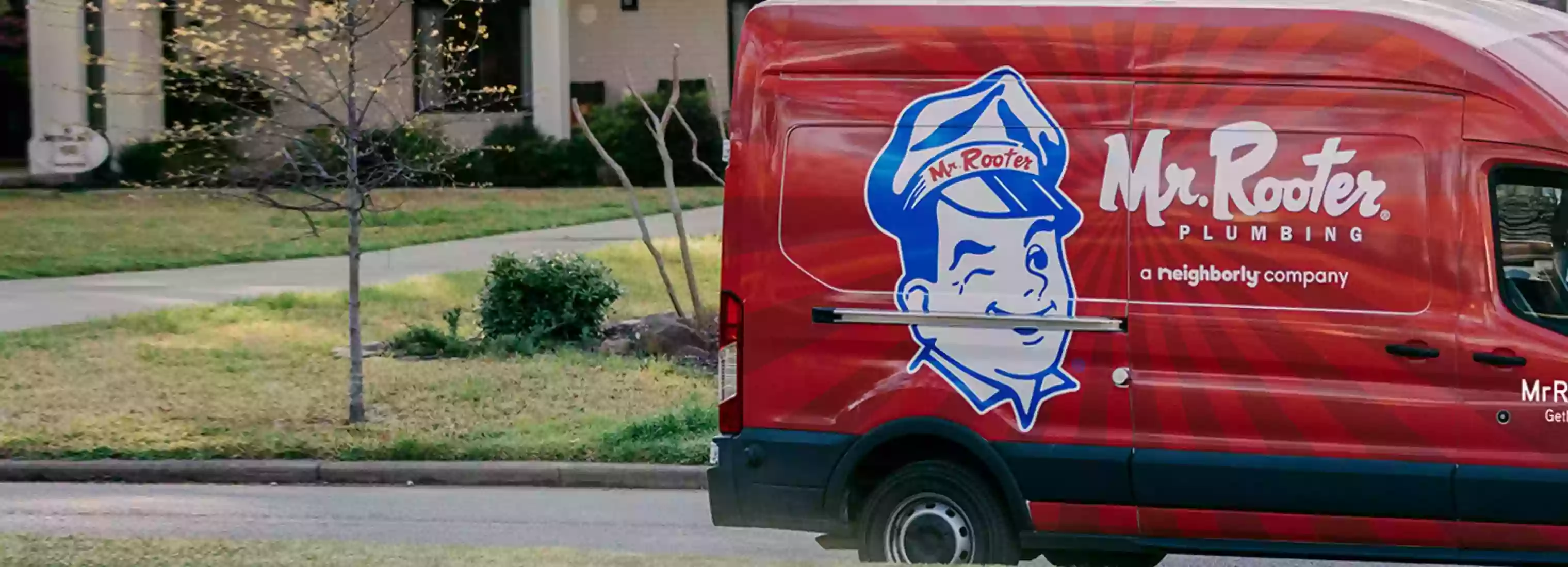Giving Your Dog a Bath Without Clogging the Drain

Part of being a good pet parent is making sure your pet stays relatively clean. If you’re a dog owner, depending on the size and temperament of your pooch, the thought of bath time can bring on some added stress and anxiety for both of you. In addition, dealing with the aftermath of all that fur going down the drain can lead to other problems for your plumbing. But bath time with your furry friend doesn’t have to be a chaotic mess, and it doesn’t have to lead to a clogged bathtub drain either! Here are some tips to keep bath time with your pooch clean, easy, and enjoyable for both of you.
How to Give a Dog a Bath in the Bathtub
The idea of giving your dog a bath in a confined space may stress you and your dog out a little. So, before you start, take a breath, relax, and come to terms with the fact that things may get a little messy. Your dog is good at reading your vibe, so if you remain calm, your dog will be less stressed too. Here are a few other dog bath tips to make the process easier for you and your pet.
- Gather Supplies: Before you get your pup wet, make sure you have everything you need nearby. Take a quick inventory of the supplies you have gathered. You should have a brush, dog shampoo, towels, and a few treats (don’t forget treats) to reward Sparky for a job well done. Rewarding your dog with a treat after a good bath experience will help create a positive association for them. This way they won’t freak out every time the bathtub is turned on.
- Frequent Brushing: If you brush your dog often, there will be less loose fur to deal with at bath time. Less loose fur means less fur going down the drain during their bath. Make it a habit to brush your dog about 15-30 minutes prior to giving them a bath. This is a good opportunity for the two of you to bond and relax. The process will also make cleaning up a little easier.
- Shampoo Technique: After wetting your dog down to the skin, work up a shampoo lather starting from the neck and working your way down to the tail and toes. Starting the soapy wall at the neck area will keep fleas and ticks from finding refuge in your dog’s ears or head area. Speaking of your dog’s head, try to keep soap and water away from their eyes, nose, and ears. Nobody likes soap in their eyes at bath time and the combination of soap and water on their face may stress them out even more. In addition, it’s not good to get water in a dog’s ear. Dogs have longer ear canals, and if water gets into them, it can be hard to remove all the water from their ears. If water remains in your dog's ears, it can turn into a health issue. So be careful when soaping around your dog’s head and neck area.
- Towel Shake Shield: Most dogs don’t like to stay wet too long so be prepared for the inevitable shake-off that is going to take place. To keep your dog from soaking you during this ritual drape an extra towel over their back between the soaping and rinsing process, and again right after your final rinse. Once they have a good shake, or two, you can begin drying their face and paws with another towel without getting a bath of your own.
How Warm Should Dog Bath Water Be?
Since your dog can’t tell you if the water is too hot or too cold, you’ll have to use good pet parental judgment. The best temperature to bathe a dog is usually in lukewarm water. Not only is it more comfortable for your pet than hot or cold water, but it’s also the best water temperature for releasing dirt from the fur and rinsing away the soap. If you own a small dog, try to dry them off as soon as possible so they don’t get too cold.
What to Use to Wash Your Dog
Similar to selecting a shampoo that meets the needs of your hair type, you should select a dog shampoo that meets the needs of your pet’s coat and skin. There are pet shampoos that are designed specifically for certain dog breeds or coat types. There are even dog shampoos available for certain skin conditions. If you are unsure which one is best for your dog, ask your veterinarian to recommend or prescribe the best one to use.
How Often to Wash Your Dog
Depending on how and where your dog plays, most dogs only need a bath once a month. Some dogs can even go a few months without a bath. It really depends on your dog’s skin type, fur length, and how often they play outside in the dirt. Oily or wrinkled skin may require more frequent grooming while drier skin may need fewer baths. And dogs with long fur may need to be cleaned more frequently to remove fleas and ticks. Of course, a visual inspection works too. If your pet has been playing outside for an extended period or gets dirty more often, you may have to turn on the bubbles sooner.
How to Prevent Dog Hair from Clogging the Drain
No matter how well you brush your dog before bath time, there will be fur. These are a few strainers that can help make cleanup a little easier and help you avoid the dreaded clogged drain.
- Drain Cover: A simple hair-catching screen that slips over most standard drains will drastically reduce how much fur goes down the drain. This should reduce the chance of a major clog backing up your drain.
- Pop-up Drain Cover: This cover is shaped to rise over the bulge of the pop-up drain. Many also come with silicone rings to adapt them to different drain sizes. Again, the concept here is to keep less fur from going down the drain.
- Linear Shower Drain Hair Catcher: Unlike a conventional drain, which is circular, a linear drain is a long, narrow rectangle, but you can still use a hair catcher on it. The hair catcher should cover the long narrow slit and keep most of your pet’s fur from passing through into the drain.
Stubborn Drain Clogs? Call a Pro
Keeping your pet clean is part of being a responsible, caring pet owner, but bath time can get a little chaotic at times, especially if your pooch doesn’t like water. And as much as we try to keep our drains clear, debris can still build up and cause troublesome clogs. Whether it’s fur from your dog, your own hair, or anything else, your local Mr. Rooter® Plumbing is prepared to clear your stubborn clogs quickly. Just give us a call or request an estimate online today.
 Click to call
Click to call


